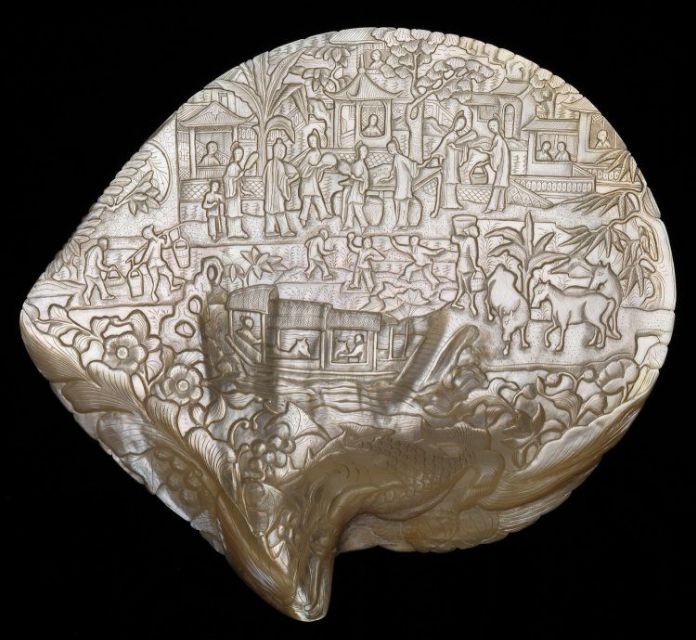The Shell
Pearl oyster shells are native to Hong Kong, where this particular one was painted. Plenty of them cover the shores of the city’s beaches.
Oyster sauce is one of Hong Kong’s signature products. It is a famed local cooking ingredient whose production leaves behind heaps of emptied shells. Pearls from wild oysters had been found in Hong Kong until the late Ming dynasty (1368-1644) when Southern Chinese pearls were praised as tributes to the Northern Chinese imperial court in historic treatises as The Exploitation of the Works of Nature (1637) [cf]
Cultured pearls were locally farmed in Hong Kong by the mid-twentieth century, but the industry could not survive [cf]. Local craftsmen have engaged with the materiality of shells by polishing and carving their surfaces with figurative decorations. Painted shells such as the one in the Hong Kong Maritime Museum were made as souvenir items for tourists.
